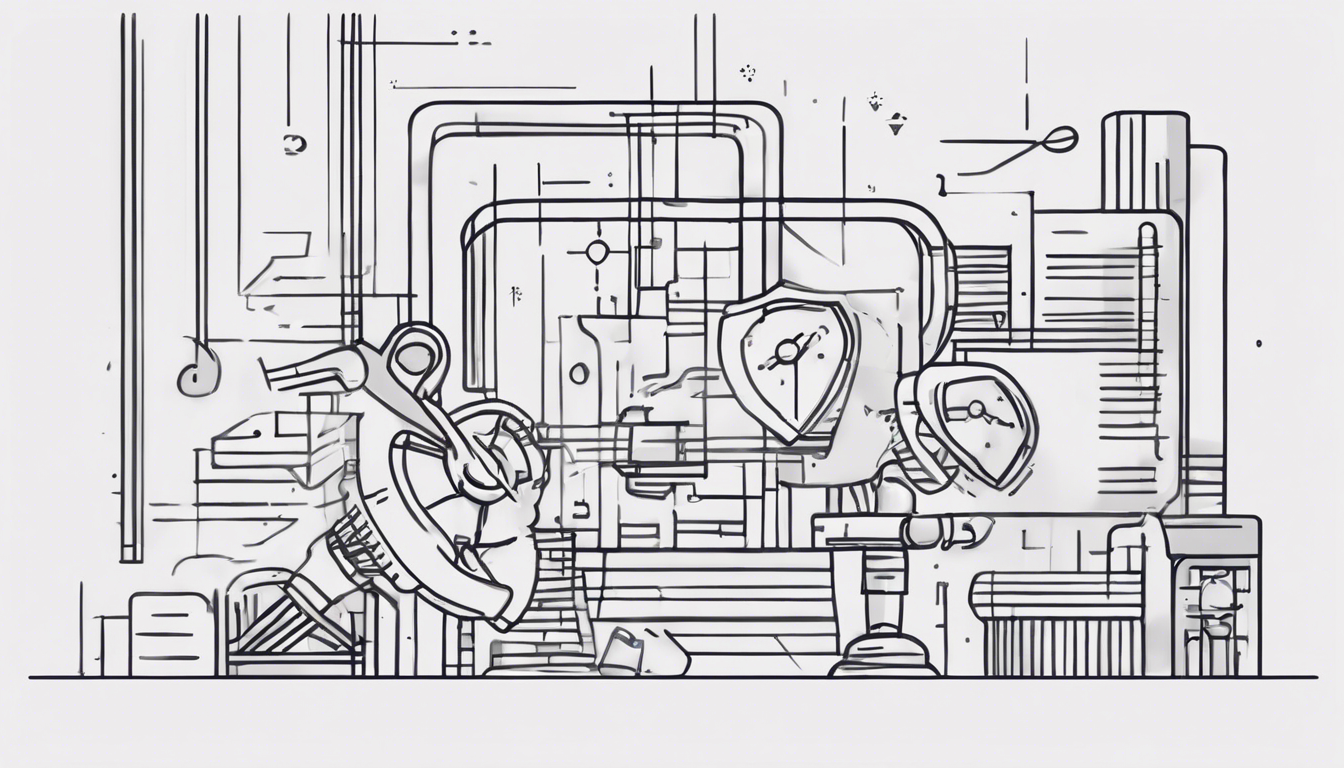Introduction
Technical challenges are like puzzles waiting to be solved in the world of innovation and problem-solving. These hurdles can range from complex coding errors to logistical nightmares, but one thing is for sure – they keep us on our toes! Embracing these challenges head-on is crucial for growth and development in any technical field.
Addressing technical challenges is not just about fixing what’s broken; it’s about pushing boundaries, fostering creativity, and finding new ways to overcome obstacles. By tackling these hurdles, we not only improve our skills but also pave the way for groundbreaking solutions that can change the game.
In this essay, we will delve into the world of technical challenges, exploring their types, causes, and most importantly, strategies for effectively dealing with them. So, buckle up and get ready to navigate the exciting terrain of problem-solving in the tech realm!
Understanding Technical Challenges

Technical challenges come in various shapes and sizes, from software bugs that seem to have a life of their own to hardware malfunctions that make you question your sanity. Understanding the different types of challenges is the first step towards conquering them with confidence.
Common causes of technical challenges can often be traced back to rushed deadlines, lack of communication, or simply the unpredictable nature of technology itself. By identifying these root causes, we can proactively work towards preventing future roadblocks.
Ignoring technical challenges is like ignoring a leaky faucet – it may seem small at first, but eventually, it can lead to a flood of problems. The impact of turning a blind eye to these hurdles can result in project delays, decreased productivity, and even reputational damage. It’s essential to address them head-on to avoid a snowball effect of issues.
Strategies for Identifying Technical Challenges

Regular monitoring and evaluation are like having a radar system for technical challenges. By keeping a close eye on project progress and performance metrics, we can spot potential issues before they escalate into full-blown crises.
Feedback mechanisms, such as surveys, team meetings, and peer reviews, provide valuable insights into the areas where technical challenges may be lurking. Listening to feedback from all stakeholders can uncover blind spots and offer fresh perspectives on problem areas.
Engaging with stakeholders is not just about ticking a box; it’s about building a collaborative environment where everyone feels empowered to voice their concerns and ideas. By involving all parties in the process, we create a culture of transparency and shared responsibility in tackling technical challenges.
Overcoming Technical Challenges

When faced with a technical challenge, it’s time to put on your problem-solving hat and dive into the nitty-gritty details. Approaching the issue with a clear mind, logical reasoning, and a dash of creativity can often lead to innovative solutions that break through the toughest barriers.
Collaboration and teamwork are like the dynamic duo in the world of technical challenges. By pooling together diverse skills, experiences, and perspectives, teams can tackle obstacles from multiple angles, fostering a culture of mutual support and collective success.
Utilizing resources effectively is not just about having the latest tools and technologies; it’s about knowing how to leverage them to their full potential. From time management to budget allocation, resource optimization plays a crucial role in overcoming technical challenges efficiently and effectively.
Implementing Solutions

Developing an action plan is like creating a roadmap to success in the realm of technical challenges. By outlining clear objectives, milestones, and timelines, we can navigate the path towards implementing solutions with precision and purpose.
Testing and iterating solutions go hand in hand like peanut butter and jelly. By subjecting proposed solutions to rigorous testing and feedback loops, we can refine and improve them iteratively, ensuring that they are robust and effective in addressing the root cause of the challenge.
Training and capacity building are not just one-time events; they are ongoing investments in the future resilience of teams facing technical challenges. By equipping team members with the necessary skills, knowledge, and support, we empower them to tackle any obstacle with confidence and competence.
Case Studies on Successful Technical Challenge Resolution

In the realm of technical challenges, success stories serve as beacons of hope and inspiration for those navigating turbulent waters. Take, for example, Company X, which overcame a major software glitch by fostering a culture of innovation and collaboration, leading to a breakthrough solution that wowed the industry.
Project Y’s success story is another testament to the power of perseverance and strategic problem-solving. By leveraging cross-functional teams and agile methodologies, Project Y not only resolved a critical technical challenge but also set a new standard for project management excellence.
Lessons learned from real-world cases remind us that even the most daunting technical challenges can be overcome with the right mindset and approach. By studying these cases, we gain valuable insights into what works, what doesn’t, and how we can adapt our strategies to navigate similar hurdles in the future.
The Role of Leadership in Addressing Technical Challenges

Setting clear objectives and expectations is like laying down the tracks for a high-speed train when it comes to addressing technical challenges. Effective leadership involves painting a vivid picture of the desired outcome, guiding teams towards success with clarity and purpose.
Providing support and resources is the lifeblood of teams facing technical challenges. From allocating budgets to offering mentorship, leaders play a pivotal role in creating an environment where teams feel empowered, supported, and equipped to tackle any obstacle that comes their way.
Motivating and inspiring teams is like fueling the engine of progress in the face of technical challenges. By recognizing and celebrating small wins, fostering a culture of resilience and positivity, leaders can ignite the spark of innovation and perseverance in their teams, driving them towards success.
Measuring Success in Overcoming Technical Challenges

Key performance indicators (KPIs) are like compasses guiding us through the stormy seas of technical challenges. By defining clear metrics for success, we can track progress, identify areas for improvement, and celebrate milestones along the way.
Feedback and evaluation mechanisms act as mirrors reflecting the true impact of our efforts in overcoming technical challenges. By soliciting feedback from stakeholders, conducting post-mortems, and analyzing data, we gain valuable insights into what worked well and what can be improved in our problem-solving strategies.
Celebrating achievements, no matter how small, is like adding fuel to the fire of motivation in the face of technical challenges. By acknowledging and rewarding team efforts, leaders create a culture of appreciation and recognition, inspiring teams to push boundaries and strive for excellence in overcoming hurdles.
Challenges in Sustaining Technical Solutions

Adapting to changing technologies is like riding a wave in the ever-evolving sea of technical solutions. As new tools, frameworks, and methodologies emerge, teams must stay agile and adaptable to ensure that their solutions remain relevant and effective in the face of shifting landscapes.
Ensuring continuous improvement is not a one-time task but a journey of perpetual growth and refinement. By fostering a culture of learning, experimentation, and feedback, teams can stay ahead of the curve, continuously enhancing their technical solutions to meet evolving challenges head-on.
Managing resistance to change is like navigating a maze of emotions and perceptions in the realm of technical solutions. As teams implement new processes or technologies, resistance may arise due to fear of the unknown or reluctance to step out of comfort zones. Effective change management strategies can help teams overcome resistance and embrace innovation with open arms.
Conclusion
In conclusion, navigating the intricate landscape of technical challenges requires a blend of resilience, creativity, and strategic thinking. By understanding the types, causes, and strategies for addressing these hurdles, teams can pave the way for innovative solutions that drive progress and success.
The importance of taking a proactive approach to technical challenges cannot be overstated. By staying vigilant, collaborative, and resourceful, teams can not only overcome obstacles but also thrive in the face of adversity, turning challenges into opportunities for growth and innovation.
As we wrap up this exploration of dealing with technical challenges, let’s remember that every hurdle is a chance to learn, grow, and push the boundaries of what is possible. So, let’s roll up our sleeves, face challenges head-on, and embark on a journey of continuous improvement and success in the dynamic world of technology.





